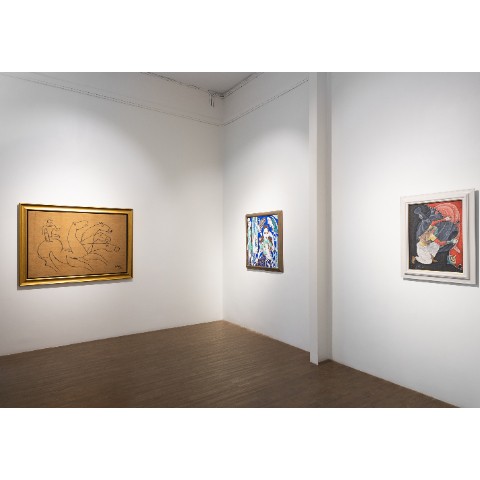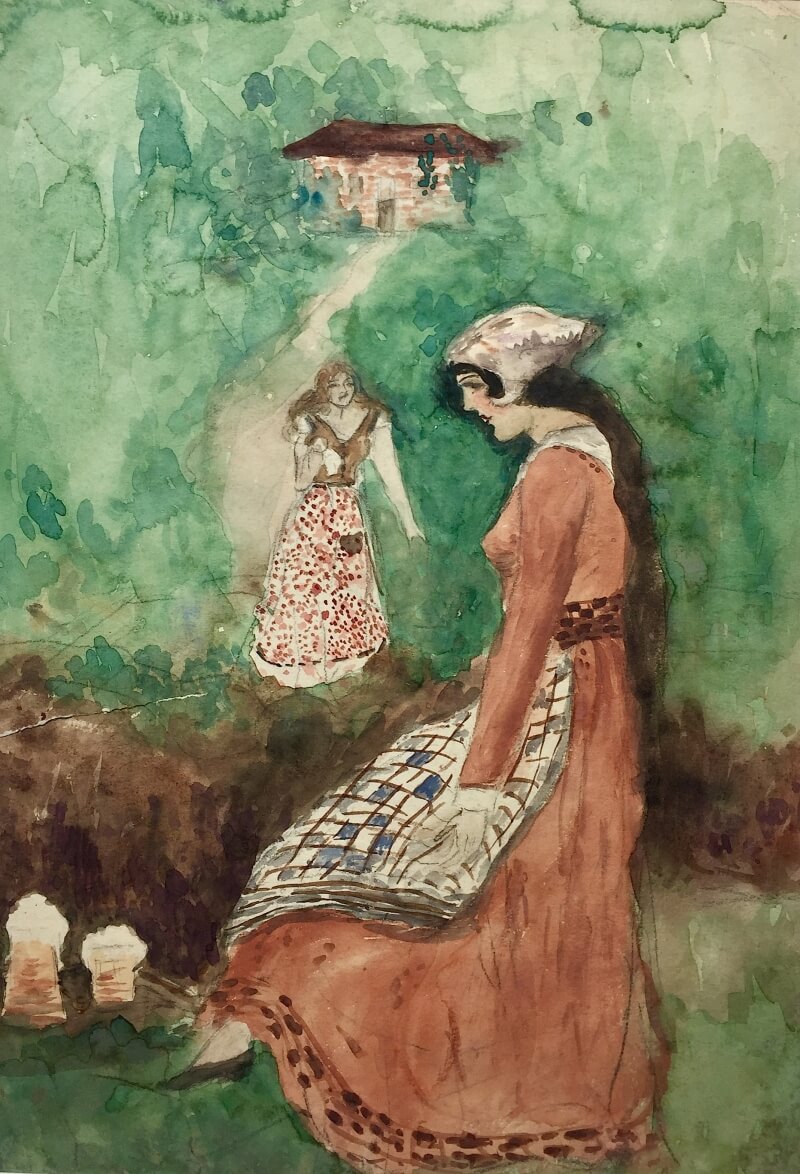
K. H. ARA
Akara Modern
1914 -1985
Born in
Secunderabad, K. H. Ara was a self-taught artist, who caught the attention of
Rudy Von Leyden, an art critic from the Times of India, and then Walter
Langhammer, the Editor of the Illustrated Weekly of India. Ara’s art had skill
and originality that was not marred by either the eloquence of the west or the
regimented temperament of formal training. Langhammer was so impressed by Ara’s
skill that he had him enrolled at the Sir J. J. School of Art to provide a
confident direction to his art-making. His initial works involved paintings and
landscapes on socio-historical themes.
As a
founding member of the Progressive Artists' Group in Mumbai, K. H. Ara was one
of the first Indian painters to use the female nude as a subject. Using the
techniques of still-life and human figure studies, Ara presented the mundanity
of everyday life as an act of sybaritic expression. He was a modernist for whom
the form and language of art preceded all other social and political
motivations. His art was always intuitive and spontaneous but not deliberate or
intellectual. Even his mix of colours projected a duality of rawness and
refinement. This invoked a certain eclecticism that led him to develop a style
that was always on the verge of a search rather than discovery- a similar
manner in which his art was a path but not a destination.
Ara was
part of the managing committee of the Bombay Art Society and also the founder
of the Artists’ Aid Center and trustee at the Jahangir Art Gallery. Amongst
Ara's many honours, was the prestigious Governor's Award in 1944 and the Gold
Medal from the Bombay Art Society for his canvas Two Jugs in
1952.












